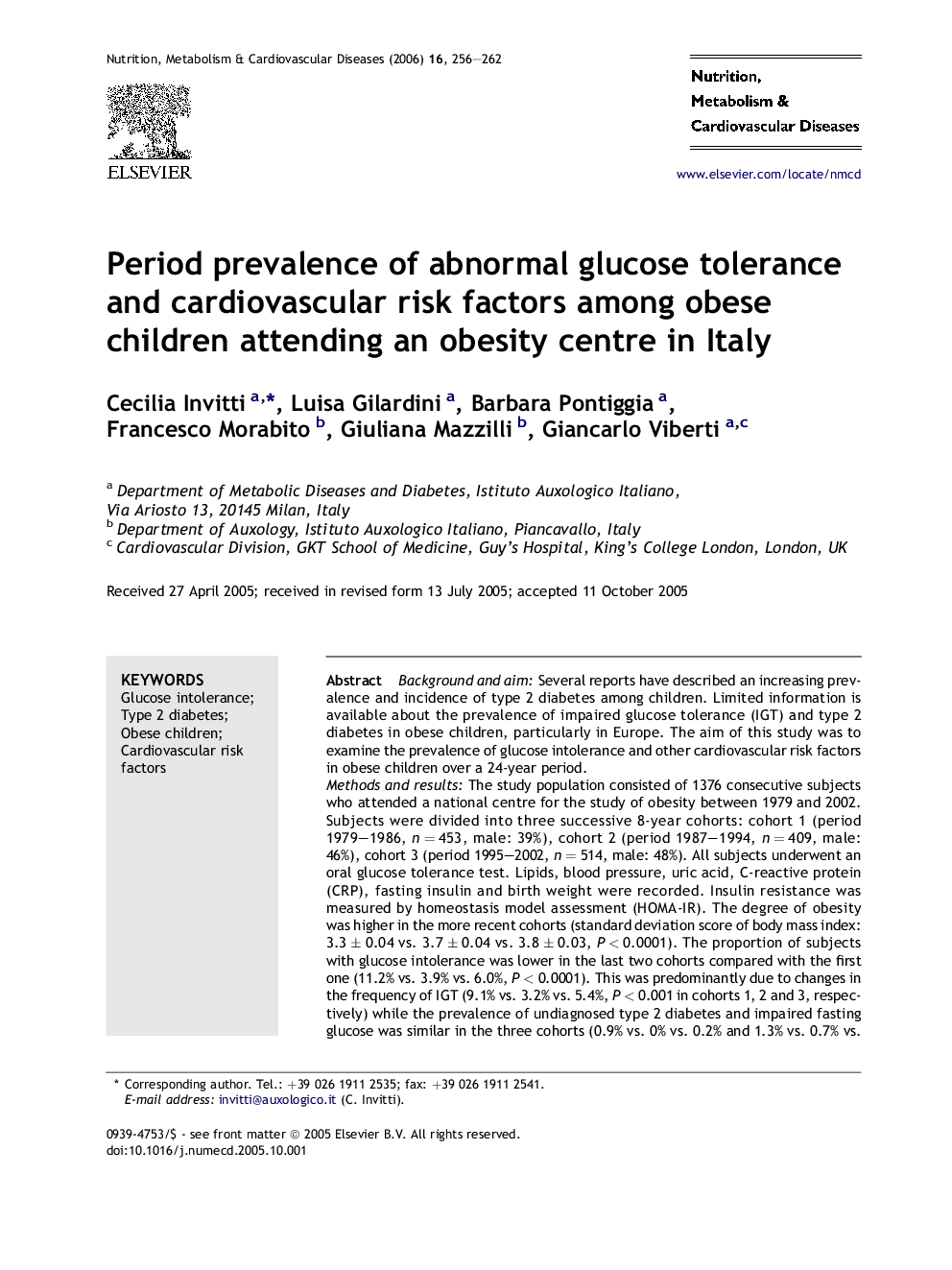| Article ID | Journal | Published Year | Pages | File Type |
|---|---|---|---|---|
| 3002841 | Nutrition, Metabolism and Cardiovascular Diseases | 2006 | 7 Pages |
Background and aimSeveral reports have described an increasing prevalence and incidence of type 2 diabetes among children. Limited information is available about the prevalence of impaired glucose tolerance (IGT) and type 2 diabetes in obese children, particularly in Europe. The aim of this study was to examine the prevalence of glucose intolerance and other cardiovascular risk factors in obese children over a 24-year period.Methods and resultsThe study population consisted of 1376 consecutive subjects who attended a national centre for the study of obesity between 1979 and 2002. Subjects were divided into three successive 8-year cohorts: cohort 1 (period 1979–1986, n = 453, male: 39%), cohort 2 (period 1987–1994, n = 409, male: 46%), cohort 3 (period 1995–2002, n = 514, male: 48%). All subjects underwent an oral glucose tolerance test. Lipids, blood pressure, uric acid, C-reactive protein (CRP), fasting insulin and birth weight were recorded. Insulin resistance was measured by homeostasis model assessment (HOMA-IR). The degree of obesity was higher in the more recent cohorts (standard deviation score of body mass index: 3.3 ± 0.04 vs. 3.7 ± 0.04 vs. 3.8 ± 0.03, P < 0.0001). The proportion of subjects with glucose intolerance was lower in the last two cohorts compared with the first one (11.2% vs. 3.9% vs. 6.0%, P < 0.0001). This was predominantly due to changes in the frequency of IGT (9.1% vs. 3.2% vs. 5.4%, P < 0.001 in cohorts 1, 2 and 3, respectively) while the prevalence of undiagnosed type 2 diabetes and impaired fasting glucose was similar in the three cohorts (0.9% vs. 0% vs. 0.2% and 1.3% vs. 0.7% vs. 0.4%, respectively). After adjustment for differences in age, sex, pubertal status and birth weight the levels of fasting insulin, HOMA-IR, total cholesterol, triglycerides and blood pressure, were significantly lower in cohorts 2 and 3 than in cohort 1 while CRP and uric acid were higher in the last two cohorts.ConclusionOver a recent period spanning 24 years, the degree of obesity has risen but the prevalence of glucose intolerance has fallen in obese children admitted to an obesity centre. This was accompanied by an improvement in traditional but a worsening in non-traditional risk factors for cardiovascular disease.
